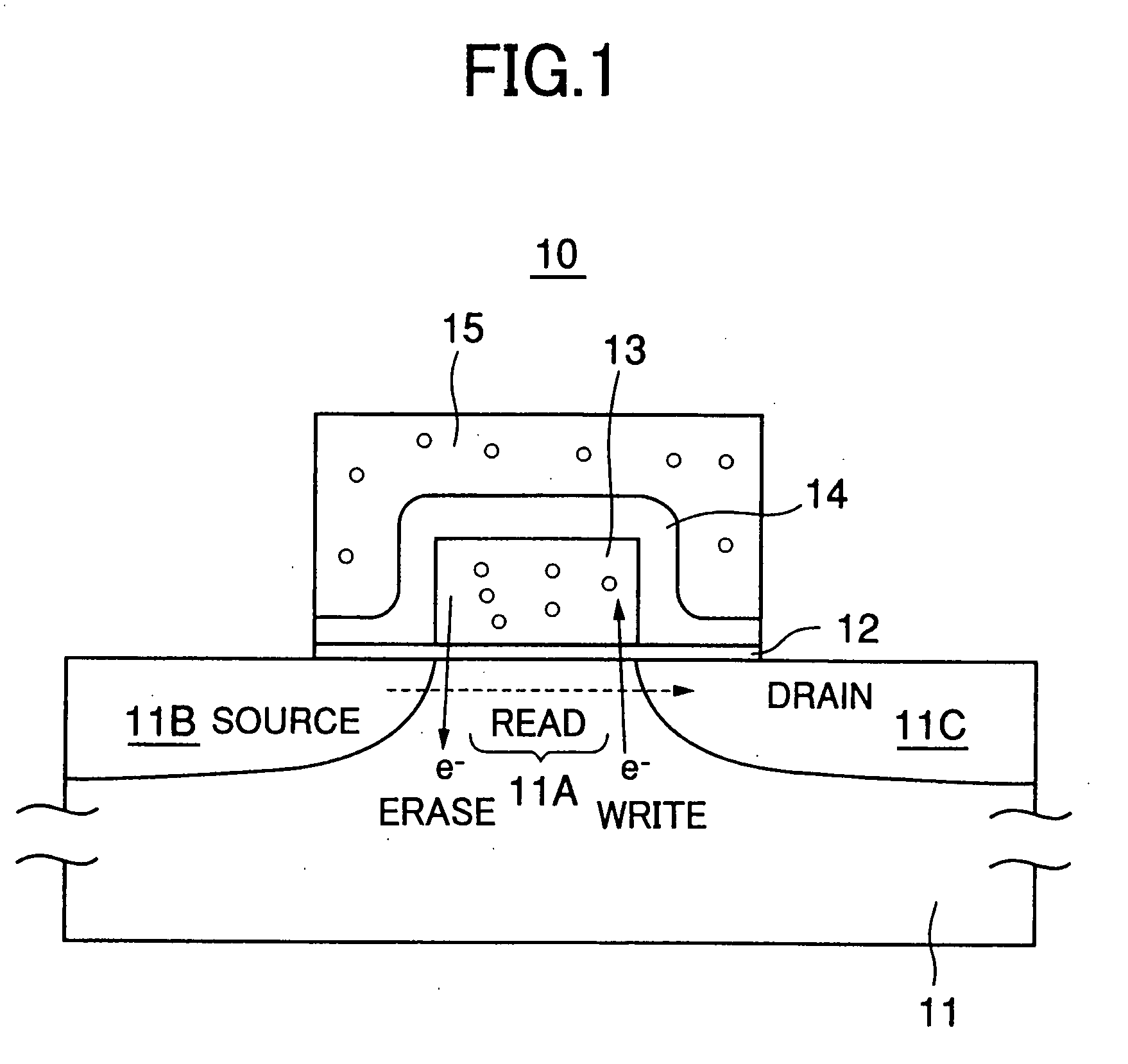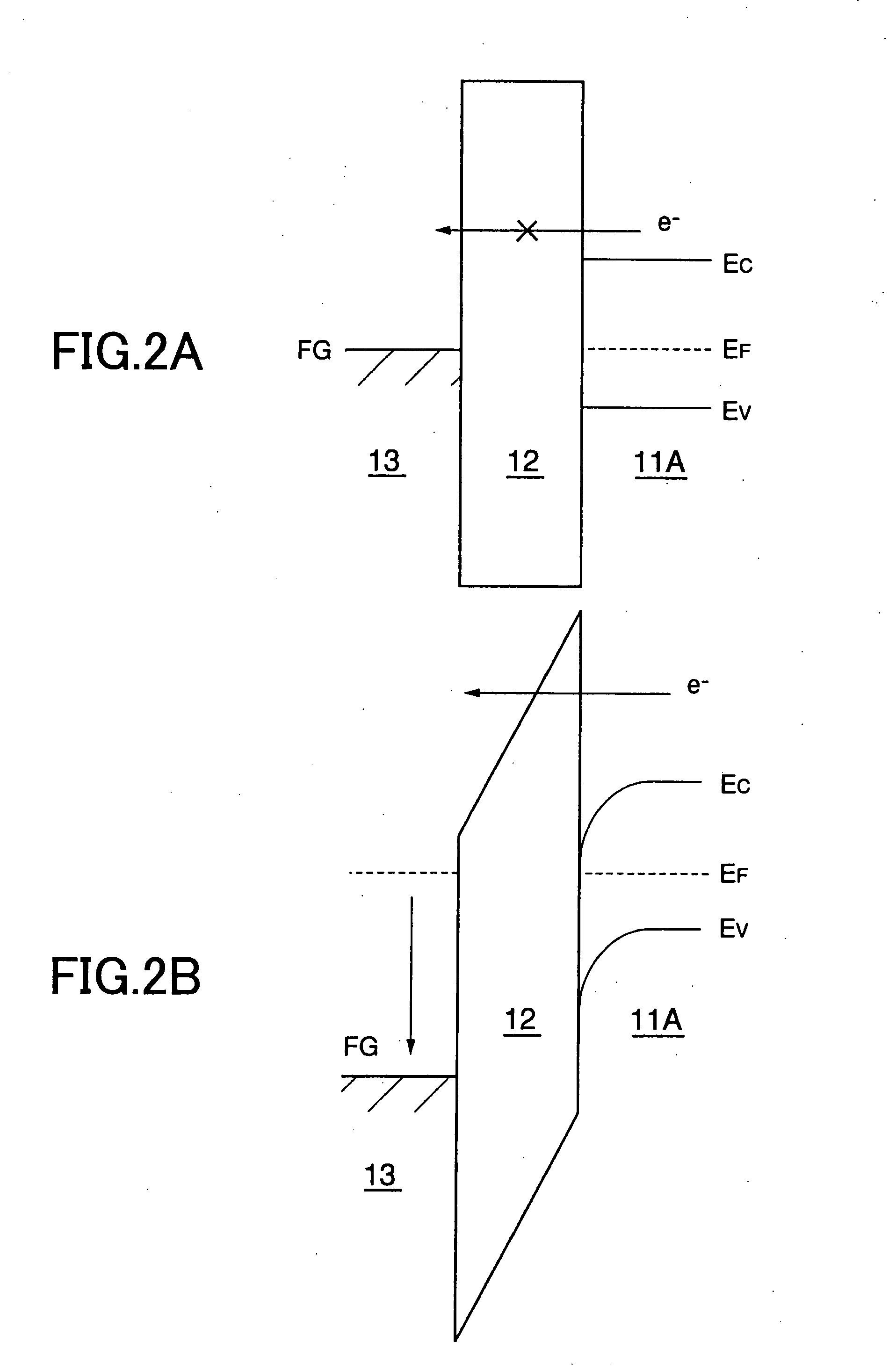Dielectric film and formation method thereof, semiconductor device, non-volatile semiconductor memory device, and fabrication method for a semiconductor device
a semiconductor and non-volatile technology, applied in semiconductor devices, semiconductor/solid-state device details, inorganic insulators, etc., can solve the problems of deterioration of leakage characteristics, difficult to realize a high-performance miniaturized transistor that requires a decrease of the thickness of the gate insulation film, and difficulty in reducing the thickness of the silicon oxide film thus formed. , to achieve the effect of reducing the operational voltage, reducing the leakage current, and increasing the wiring speed
- Summary
- Abstract
- Description
- Claims
- Application Information
AI Technical Summary
Benefits of technology
Problems solved by technology
Method used
Image
Examples
first embodiment
[0097]FIGS. 4A-4C show the low-temperature formation process of an oxide film that uses plasma as well as the fabrication process of a semiconductor device that uses such an oxide film according to a first embodiment of the present invention. Further, FIG. 5 shows an example of a plasma processing apparatus used in the present invention and having a radial line slot antenna in a cross-sectional view.
[0098]In the present embodiment, the hydrogen terminating the dangling bonds at a silicon surface is first removed in the step of FIG. 4A. More specifically, the removal process of the surface-terminating hydrogen and the oxidation process are conducted in the same processing chamber continuously, and the Kr gas, which is used for the plasma excitation gas in the subsequent oxide film formation process, is used in the removal process of the surface-terminating hydrogen.
[0099]First, a vacuum vessel (processing chamber) 101 is evacuated in the plasma processing apparatus of FIG. 5 and an A...
second embodiment
[0127]FIGS. 11A-11C show the formation method of a nitride film at low temperature by using plasma according to a second embodiment of the present invention, as well as the fabrication method of a semiconductor device that uses such a nitride film.
[0128]In the present embodiment, too, an apparatus similar to the one shown in FIG. 5 is used for the nitride film formation. Further, in the present embodiment, it is preferable to use Ar or Kr for the plasma excitation gas for removing the terminating hydrogen and for the nitride film formation, in order to form a high-quality nitride film.
[0129]Hereinafter, an example of using Ar will be represented.
[0130]First, the interior of the vacuum vessel (processing chamber) 101 of FIG. 5 is evacuated to a vacuum state in the step of FIG. 11A and an Ar gas is introduced from the shower plate 102 such that the pressure inside the processing chamber is set to about 13.3 Pa (100 mTorr).
[0131]Next, a silicon substrate 103 is introduced into the proc...
third embodiment
[0148]FIGS. 13A-13D show the formation method of a two-layer laminated dielectric structure according to a third embodiment of the present invention in which an oxide film and nitride film formed by the low-temperature plasma process are laminated, as well as a fabrication process of a semiconductor device that uses such a two-layer laminated dielectric structure.
[0149]It should be noted that the apparatus used for the formation of the oxide film and the nitride film in the present embodiment is identical with the apparatus of FIG. 5. In the present embodiment, Kr is used for the plasma excitation gas at the time of formation of the oxide film and the nitride film.
[0150]First, in the step of FIG. 13A, the vacuum vessel (processing chamber) 101 is evacuated to the vacuum state and an Ar gas is introduced into the processing chamber 101 from the shower plate 102. Next, the gas to be introduced next is switched to the Kr gas from the initial Ar gas, and the pressure of the processing c...
PUM
| Property | Measurement | Unit |
|---|---|---|
| temperature | aaaaa | aaaaa |
| thickness | aaaaa | aaaaa |
| electric field | aaaaa | aaaaa |
Abstract
Description
Claims
Application Information
 Login to View More
Login to View More - R&D
- Intellectual Property
- Life Sciences
- Materials
- Tech Scout
- Unparalleled Data Quality
- Higher Quality Content
- 60% Fewer Hallucinations
Browse by: Latest US Patents, China's latest patents, Technical Efficacy Thesaurus, Application Domain, Technology Topic, Popular Technical Reports.
© 2025 PatSnap. All rights reserved.Legal|Privacy policy|Modern Slavery Act Transparency Statement|Sitemap|About US| Contact US: help@patsnap.com



